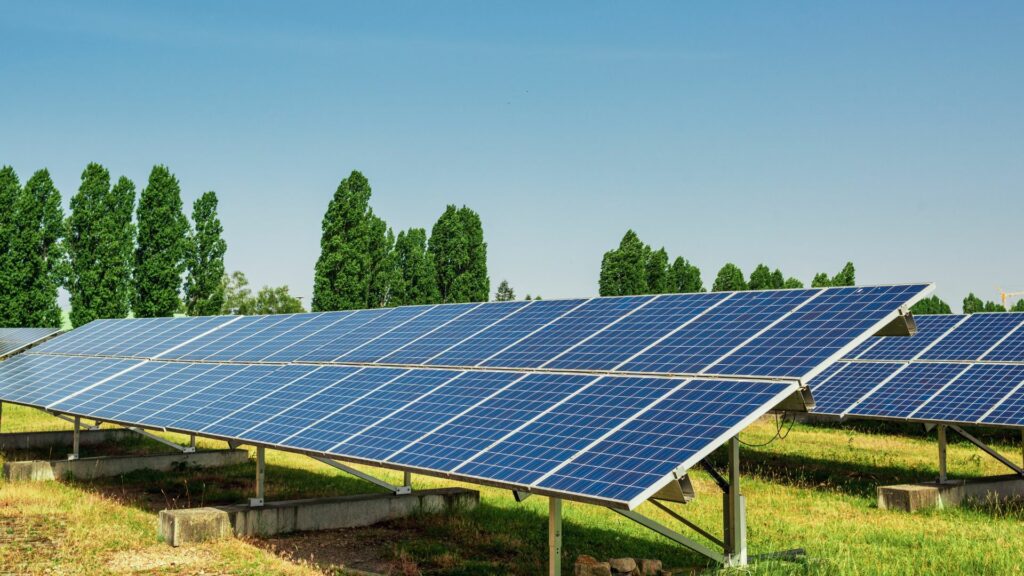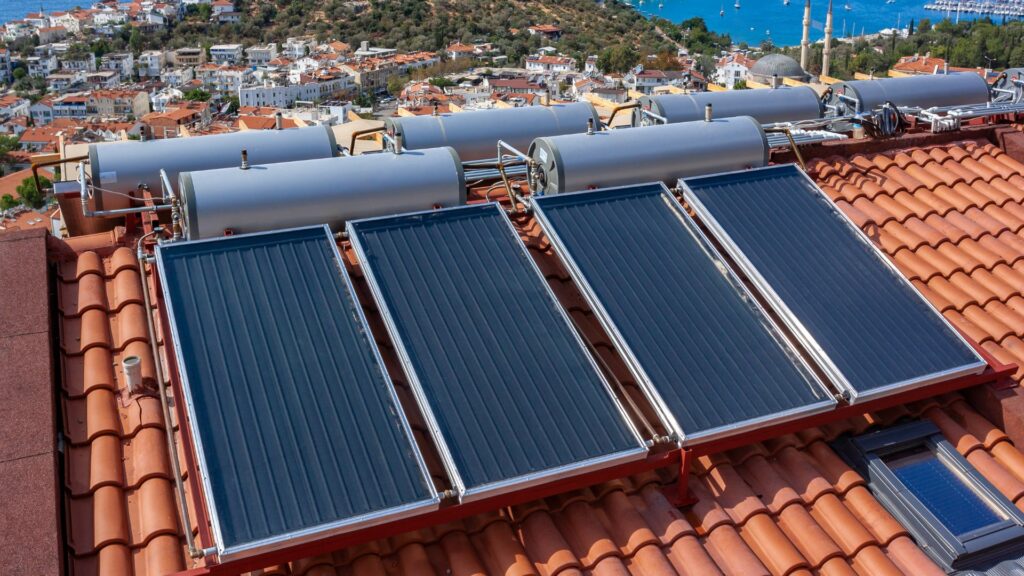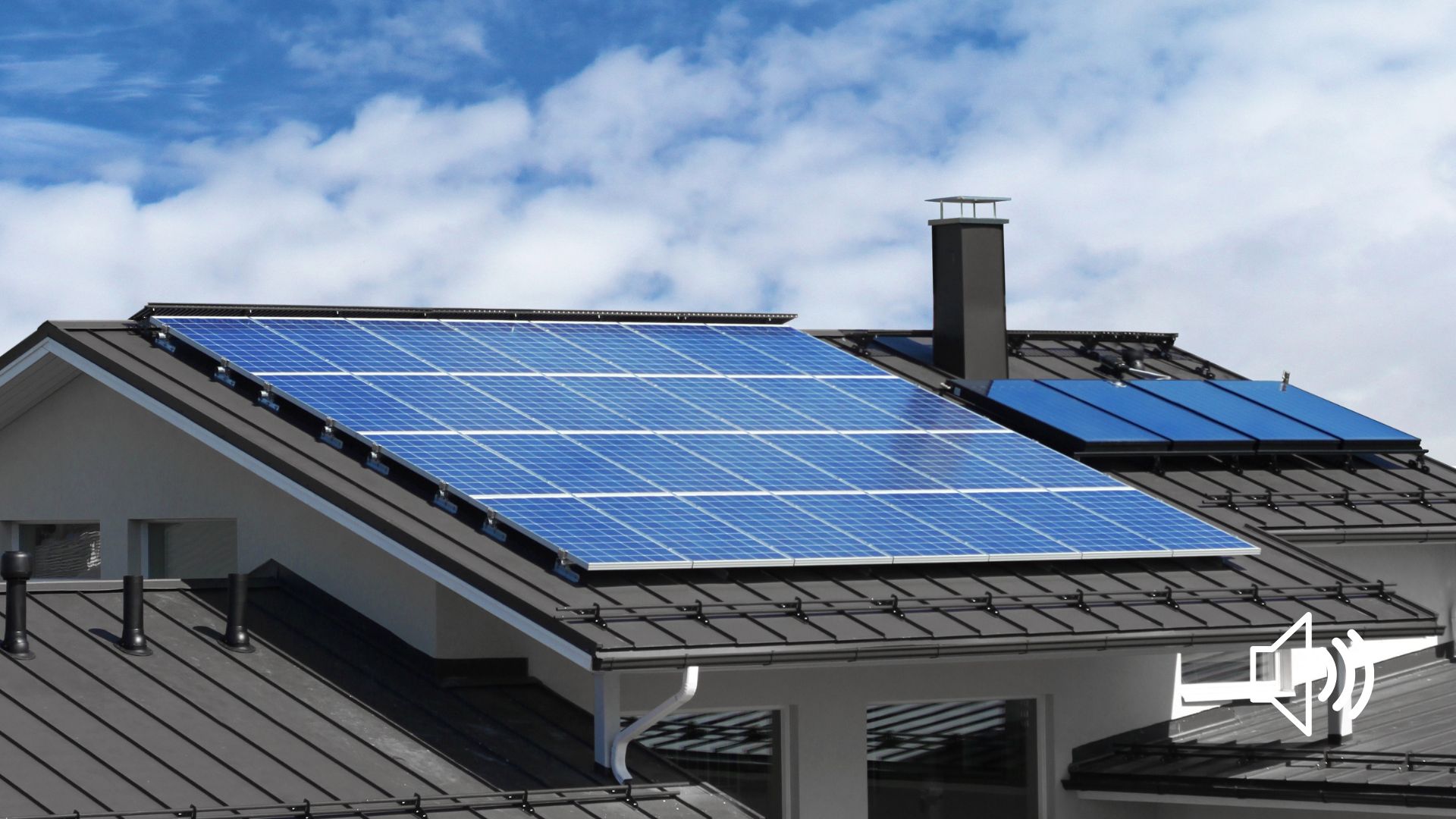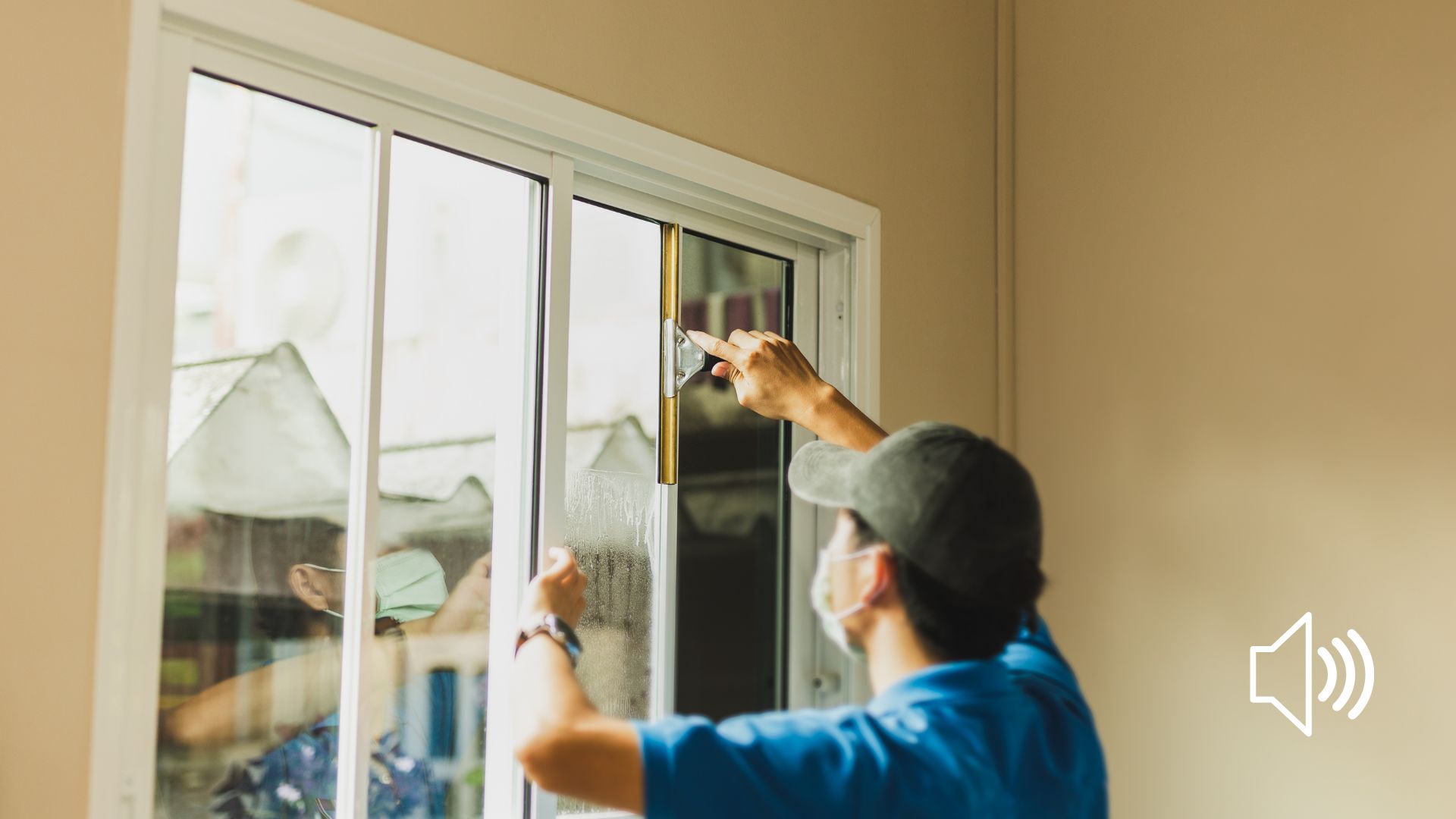Solar panels and solar thermal collectors both harness solar energy. But they work in different ways and have different costs. They also serve different purposes.
Choosing the right solar system for your home is important. This blog will help you understand the differences. It will guide you in picking the best system for your needs and savings goals.
The Key Takeaway
Remember this: Solar panels turn sunlight into electricity. Solar thermal collectors heat water or air with sunlight. That’s the main difference.
They are quite different, aren’t they?
We will look at how they work, their pros and cons, and when to choose one over the other. This guide will help you understand solar systems better.
Whether you’re looking to invest in renewable energy or just want to learn more, this article is for you. Let’s get started.
Solar Panels for Electricity Production – How They Work and Their Purpose
Solar panels are popular for turning sunlight into electricity. They are used to make electrical power.
Also known as photovoltaic (PV) panels, they use the photovoltaic effect. Sunlight hits a silicon cell, releasing electrons. These electrons create direct current (DC). Then, solar inverters change it to alternating current (AC) for homes and businesses. You can also store the electricity in batteries.
The Benefits of Solar Panels
Solar panels can lower your electricity costs. They reduce your need for energy from fossil fuels, which harms the environment. Many governments also offer subsidies and incentives for installing solar systems.
These benefits make solar panels a sustainable energy solution that’s becoming more popular. With new technology and growing interest in renewables, solar panels are here to stay.

Common Applications of Solar Panels in Homes
Installing solar panels on rooftops, as well as other suitable locations such as backyards, parking garages, or open fields, can significantly cut down monthly electricity bills. You can also sell any extra electricity back to the grid for extra money, if allowed by law.
Here are some common uses of solar panels in homes:
- Powering home appliances – Solar panels provide electricity for daily needs.
- Water heating – They work with solar thermal collectors to heat water or air.
- Energy independence – Solar panels offer off-grid electricity, great for remote areas or as a backup.
Solar Panels in Urban Environments
Solar panels are not just for rural areas. They’re also used in cities for their economic and environmental benefits.
Here are some urban uses:
- Rooftop solar installations – Homes generate electricity for themselves.
- Balconies and terraces – Small solar panels power devices or store energy in batteries.
- Public lighting – Solar-powered streetlights are sustainable and cost-effective for city lights.
Solar Thermal Collectors for Heating Water and Air – How They Work and Their Purpose
Solar panels and solar thermal collectors do different things. Let’s repeat. PV panels make electricity from sunlight. Solar thermal collectors warm water or air with solar heat.

Simplified diagram of Solar Collectors System. Source: https://www.eia.gov/
How Do Solar Thermal Collectors Work?
Solar thermal collectors soak up solar radiation and turn it into heat. They have an absorber plate that catches sunlight. This heats a fluid that goes to a storage tank or boiler.
This heated fluid is used for hot water or space heating. They are a smart choice for saving money and helping the environment.
Where Are Solar Thermal Collectors Most Commonly Used?
Solar thermal collectors are used in many ways. They turn sunlight into heat.
The most common uses include:
- Domestic hot water heating – They can meet up to 60% of your hot water needs, saving on bills.
- Space heating – They help cut down on fuel use by being a supplementary heating system.
- Solar cooling – They make air conditioning efficient using solar energy.
- Swimming pool heating – They keep pool water warm, extending the swimming season.
- Agricultural applications – They help in greenhouses and horticulture for better growing conditions.

Energy Efficiency and Cost Savings Potential
Solar thermal collectors are popular for saving energy and money.
What Determines Their Efficiency?
Their efficiency depends on:
- Material quality
- Proper installation
- System size
- Sun exposure (geographical location and seasonal variations)
Choosing the right system means considering sunlight in your area and your heating needs.
Long-Term Financial Benefits
Solar thermal collectors are good for the planet and your wallet. They help cut energy costs and use less traditional energy.
They often pay off in a few years. They save money and help the environment by reducing greenhouse gas emissions.
Key Differences Between Solar Panels and Solar Thermal Collectors
Here’s a quick look at their differences:
| Feature | Solar Panels (Photovoltaic) | Solar Thermal Collectors |
|---|---|---|
| Function | Converts sunlight into electricity | Converts sunlight into heat |
| Application | Powers appliances, lighting, and heating | Heats water and air |
| Best for | Reducing electricity bills, energy independence | Lowering heating costs, hot water supply |
| Installation Cost | Higher upfront cost, but long-term savings | Lower cost, faster return on investment |
How to Choose Between Solar Panels and Solar Thermal Collectors
Deciding between solar panels and solar thermal collectors can be tricky. Both systems harness solar energy but serve different purposes.
- If you want to cut down on electricity costs, solar panels are the way to go.
- For an affordable way to heat water, pools, or greenhouses, solar thermal collectors are more effective.
Making the right choice can lead to long-term savings and support a greener future.
This guide helps you understand the key differences between solar panels and solar thermal collectors. It aids in making a choice that fits your energy needs. Whether you opt for solar panels, thermal collectors, or both, embracing renewable energy boosts energy independence and environmental stewardship.
Read also: Quick Guide: Installing Solar Panels on Your Roof
🔗 Download E-BOOK: “Essential Guide to Passive House Design” for FREE ⬇️⬇️⬇️





